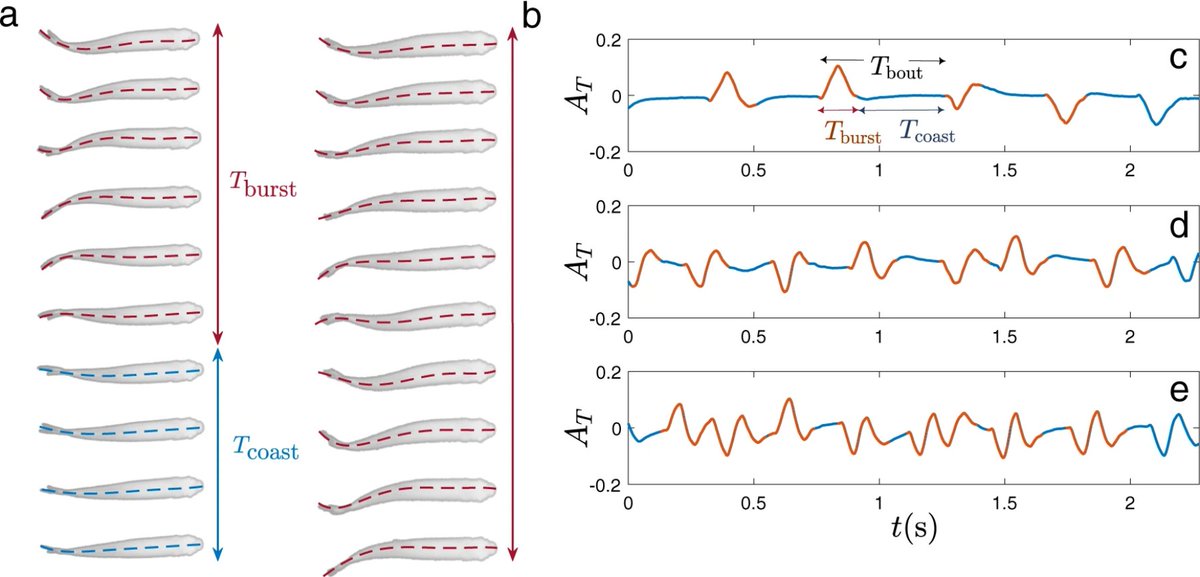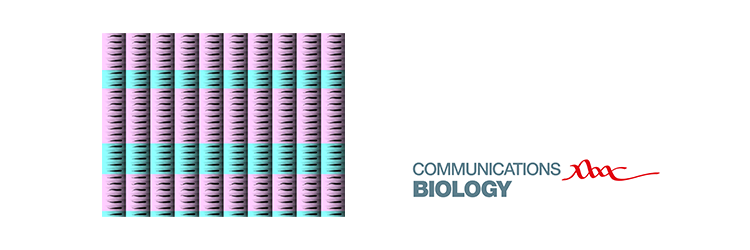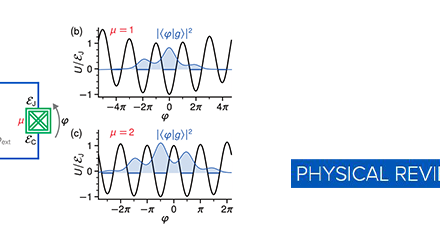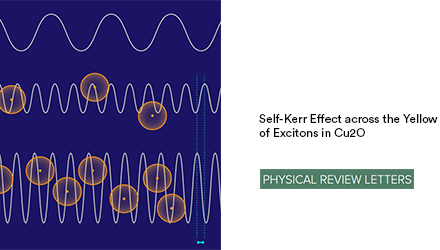Body and caudal fin undulations are a widespread locomotion strategy in fish, and their swimming kinematics is usually described by a characteristic frequency and amplitude of the tail-beat oscillation. In some cases, fish use intermittent gaits, where a single frequency is not enough to fully describe their kinematics. Energy efficiency arguments have been invoked in the literature to explain this so-called burst-and-coast regime but well controlled experimental data are scarce. Researchers from ESPCI, LPENS, and JAMSTEC, through their study of intermittent fish in Hemigrammus bleheri and a numerical model based on the observations, show that:
(1) fish modulate a unique intrinsic cycle to sustain the demanded speed by modifying the bursting to coasting ratio while maintaining the duration of the cycle nearly constant (2) the chosen kinematics correspond to energy-saving gaits over the range of swimming speeds tested.

Time scales in burst-and-coast swimming for Hemigrammus bleheri
More :
Burst-and-coast swimmers optimize gait byadapting unique intrinsic cycle, Nature Communications Biology (2021). https://doi.org/10.1038/s42003-020-01521-z
Author affiliation :
Laboratoire de Physique de L’Ecole normale supérieure (LPENS, ENS Paris/CNRS/Sorbonne Université/Université de Paris)
Corresponding author : Frédéric Lechenault
Communication contact : L’équipe de communication














